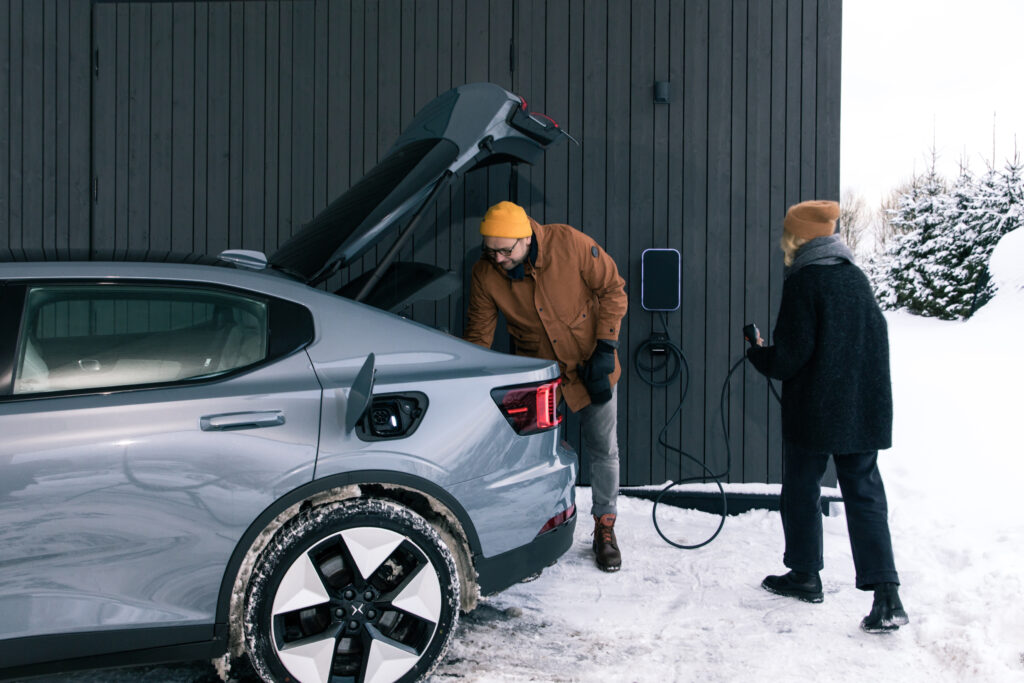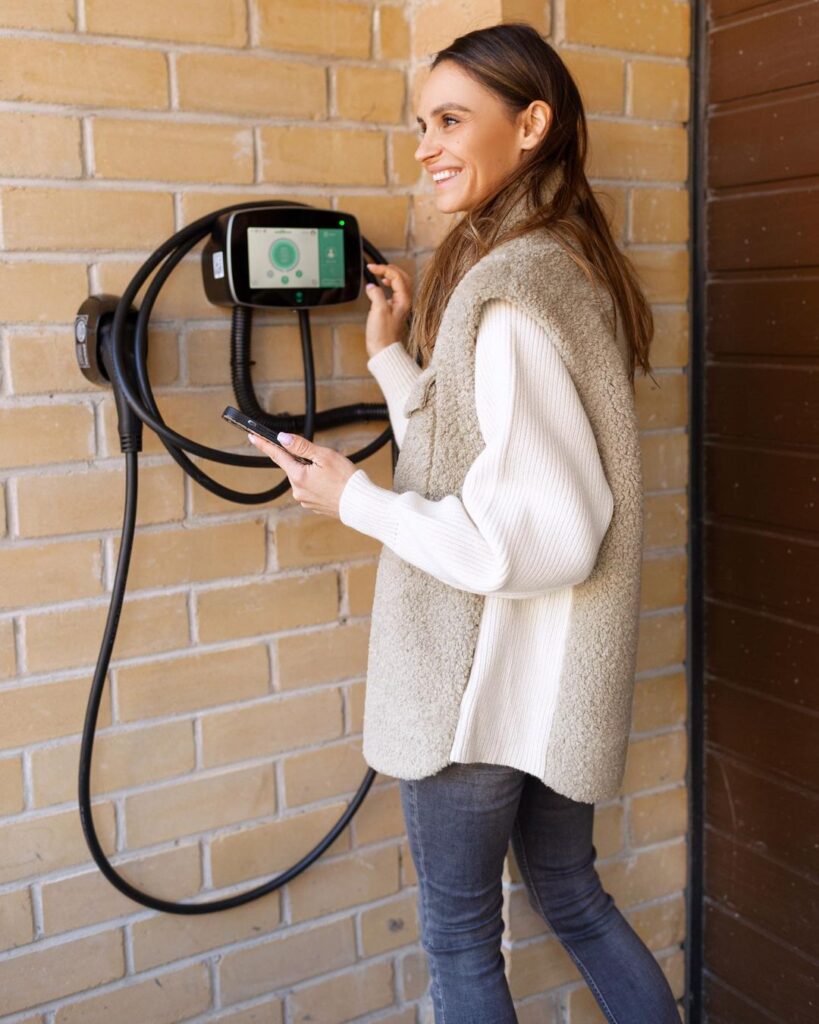Pagrindinis » News » Home charging solutions » Home loading is easier than you thought: a quick guide for first-time EV owners

Charging your electric car at home is one of the first topics of interest for new EV drivers. How does it work, what equipment is needed and is it really convenient? Most people are soon convinced that home loading is the easiest and most convenient way to do it.
At home, charging is no longer an extra task, it’s just part of everyday life – you plug it in at night and drive off in the morning with a full battery. No more trips to public bus stops, no more waiting, no more stress.

A home charging station works basically the same way as a phone charger – plug it in and forget it. Charging is automatic and smart features let you choose when to charge. For example, you can set your car to charge only at night, when the electricity tariff is lower, or when a solar power plant produces more energy.
It gives you control – you can see how much energy you use and how much it costs. It can also connect multiple users to the station, making it suitable for families with more than one electric car.
Each case is individual – it depends on the power of your home’s power supply, the stop you choose and the electric vehicle. Before installing a charging station, you should assess how much electricity is already being used and how much power would be available for charging.
If you have limited power at home, this is not a barrier to installing a charging station. The solution in these cases is a dynamic power controller that communicates with the station and monitors the whole home’s electricity consumption. When more devices are running at the same time, the controller automatically reduces the charging power and then increases it again when consumption drops. This ensures stable operation of the grid, avoids blackouts and often eliminates the need to increase the power input.
You can charge your electric car either in your own house or in the car park of an apartment block. In private homes, the docking station is usually installed in the garage, in a carport, on the front of the house or on an additional stand, depending on the most convenient place to connect the car. Installation usually takes just one day, and all the work – from installing the station to restoring the landscaping after the cables have been laid or the rack has been concreted in place – is taken care of by specialists.
For apartment dwellers, an EV charging station can be installed if you have your own parking space or garage. In most cases, the neighbours’ consent is not needed – the project needs to be drawn up and agreed with the building administrator, the community chairman or the building manager.
As the design, coordination and installation involve several technical and administrative steps, it is recommended to choose a contractor who takes care of everything from start to finish. This avoids mistakes, ensures that the stop is installed in accordance with all the requirements and operates safely.
Charging time at home depends on several factors – the battery capacity of the electric car, temperature, the power of the station, the level of charge remaining and driving habits. Most drivers do not charge their car from 0 to 100%, but only top up the remaining energy after daily use – similar to a phone. As a result, charging often takes just a few hours instead of all night.
Home charging stations typically run at 3.6-11 kW, so even with a larger battery, an electric car can be charged to 100% in 6-10 hours. In practice, however, this is less often the case, with drivers typically maintaining a battery level between 20% and 80%, and this regular, steady charging at home is better for the longevity of the battery than frequent rapid charging at public charging points.

Having a home charging station makes charging not only convenient, but also cost-effective. If you have a solar power plant or are planning to install one, the bus stop can be connected to the same system, so that the electric car is charged with the energy generated by the sun. Some smart stations also integrate Nord Pool electricity prices and automatically charge your car when electricity is cheapest. This allows you to further optimise your costs and exploit market fluctuations to your advantage.
Home charging is not a complicated project, but a simple way to get around cheaper, more conveniently and independently of public stops.
We use cookies to ensure that our website runs smoothly and to provide you with the most relevant content. You can choose which cookies you accept.